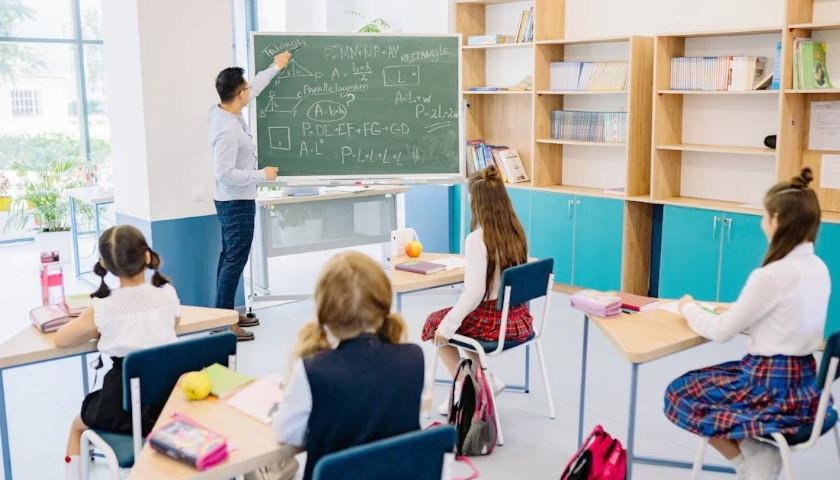by Keri D. Ingraham
Parents, children, and supporters of school choice have cause to celebrate this National Charter Schools Week.
Charter schools earned the top two spots on a list of the best high schools in America, according to a recent report by U.S. News & World Report. And, of the top 100 public high schools, charter schools claimed 19 spots—10 in Arizona alone—despite accounting for only 8% of all public schools in the country.
Yet with all their proven success, these tuition-free public schools open to all students are far too few nationwide.
Charter schools are in high demand by parents, as evidenced by consistently long waitlists. Yet of the 46 states plus Washington, D.C., with laws allowing charter schools, many states either cap the total number of charters allowed or the number that may be opened each year, or restrict the creation of charter schools to failing districts.
Legislation proposed in Mississippi this year would have expanded the state’s existing, restrictive law to increase the total number of charter schools from the current 10.
As explained by Empower Mississippi, HB 1683 would have allowed applicants to apply to start charter schools in C-rated districts, not just D- and F-rated districts, as is the case currently, without needing the approval of the local school board—which is unlikely to be granted.
The bill also would have allowed for the creation of charter schools in any district as long as they are aimed at serving students with autism or emotional or intellectual disabilities. Finally, the bill would have granted Mississippi’s colleges and universities the ability to authorize charter schools. Currently, only the Charter School Authorizer Board has that power.
Washington state has only 18 charter schools, despite passage of a law allowing them 12 years ago. In 2021, a statewide ban on new charter schools occurred. Liv Finne, director of the Center for Education at Washington Policy Center, noted that the Washington State Board of Education “finds that children who attend a charter public school receive an education that is as good or better than the one provided at most traditional public schools.”
The Washington State Board of Education made two key recommendations in conjunction with charter school authorizers: First, the board recommends that additional charter schools be granted the opportunity to open. Second, it recommends an “examination of the sufficiency of charter school funding and approaches used in other states in order to bring about equitable educational funding for Washington’s schools.” Time will tell if any ground is gained.
Missouri took a step forward last week when Gov. Mike Parson, a Republican, signed legislation allowing charter schools in Boone County—which as of July 2023 had an estimated population of just under 190,000.
Previously, Missouri allowed charter schools only in Kansas City, St. Louis, and unaccredited school districts. In typical fashion, local school superintendents (seven of eight in Boone County) demanded a veto. Their self-serving focus is on maintaining a monopoly on student enrollment and the associated funding, not giving families educational options for their children.
Missouri lawmakers would be wise to extend the state’s charter school law to all districts.
It would be advantageous to the bottom line of all states to encourage more charter schools. A state funds only a portion of the per-pupil amount that it provides to a district’s public schools, and generally doesn’t cover facility costs—in part or in full—for charter schools.
Often, families who send their children to charter schools aren’t able to afford private school tuition or don’t have a parent or grandparents available during the workday to make homeschooling a feasible option. On average, more than half of students who attend a charter school qualify for free or reduced-price lunch based on household income.
As of the 2021-2022 school year, many minority students attend charter schools. In one example, in urban charter school enrollment, an average of 40.5% of students are Hispanic and an average of 32.6% are black. White students, on average, account for 17.6% and Asian students make up 4.4%.
More than 57% of charter schools are located in urban areas, enrolling more than 1.9 million students. Nearly 29% are in suburban areas, accounting for almost an additional 1 million students.
Parents know what is best for their children, and many desire an option other than a district public school assigned to them based on home address. Charter schools have proven to be a high-demand avenue that produces academic results for students.
Lawmakers would be wise to encourage, not limit, the expansion of charter public schools. If these schools aren’t effectively educating students, families can leave because their children aren’t bound to the schools.
Charter schools have incentives to serve families well and provide high-quality student learning, incentives that don’t exist in the near-monopoly held by district public schools.
– – –
Keri D. Ingraham, Ed.D., is a senior fellow at Discovery Institute, director of the American Center for Transforming Education, and a senior fellow at Independent Women’s Forum.





